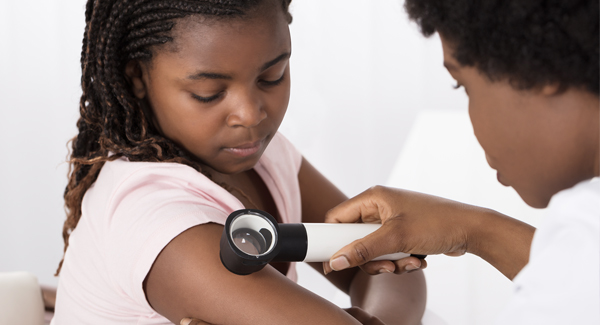Expert Q&A: Treatments for JA-Related Eye Problems
Understand uveitis in juvenile arthritis and learn about its treatments.
Question: My teenage daughter has uveitis related to her juvenile arthritis (JA), which is treated with NSAIDs and prednisone eye drops. Can you tell me if there are any data on the effectiveness of treatments for arthritis eye problems? Is my daughter at serious risk of vision loss?
Answer: JA can be associated with an eye inflammation called uveitis. This eye inflammation is most common in children (more often girls) whose arthritis begins young (less than age 5), affects fewer than five joints and is associated with a positive antinuclear antibody (ANA). This kind of uveitis affects the front part of the eye (the iris and structures surrounding it). The inflammation in the eye doesn’t cause symptoms, so it usually isn’t detected until a routine eye exam.
Other types of arthritis may also cause eye inflammation. The spondyloarthropathies, for example, which affect boys more than girls, are more likely to cause redness, pain and light sensitivity in the affected eye. Although I can’t comment on your daughter’s vision loss specifically, uveitis can lead to vision loss.
In fact, historically, this condition was a leading cause of blindness in children before we learned the importance of frequent eye exams and the benefits of different kinds of anti-inflammatory treatments for arthritis eye problems. Other complications can include glaucoma (increased pressure in the eye), due to scarring of the tube that drains fluid between the eye chambers, as well as cataracts and calcium deposits in the cornea.
In most cases uveitis can be successfully controlled, but the severity of the inflammation, response to therapy and complications of treatment always guide how an individual child is managed.
The usual initial treatment is steroid eye drops, as your daughter is receiving, sometimes with an agent that dilates the pupils to prevent scarring. If scar tissue forms, it may cause the iris, the muscle that regulates the size of the pupil, to stick to the lens. Ironically, long-term use of steroids can cause problems of their own, including glaucoma and cataracts.
There are some studies of other therapies given systemically (by mouth, injection or infusion) to both control the inflammation and reduce the risk of steroid side effects. Methotrexate given weekly is effective for controlling inflammation and reducing steroid use.
Other drugs, such as cyclosporine (Neoral), mycophenelate mofetil (CellCept) and infliximab (Remicade), have not been as closely studied but many physicians have reported good results with them. You might want to speak with your daughter’s doctor about some of these.
Helen Emery, MD
Professor Emeritus
University of Washington
Seattle, Washington

Stay in the Know. Live in the Yes.
Get involved with the arthritis community. Tell us a little about yourself and, based on your interests, you’ll receive emails packed with the latest information and resources to live your best life and connect with others.


